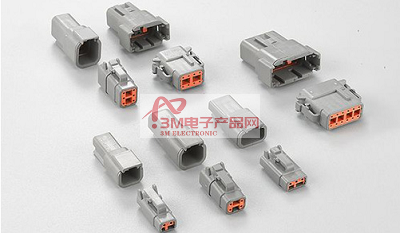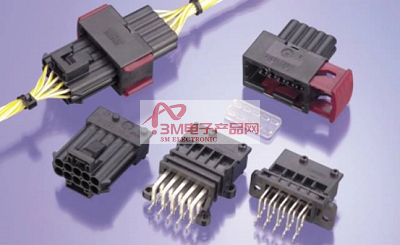Categorization:Product Information
Space and weight constraints, environmental regulations and increasingly complex system requirements are inspiring new wiring harness products and versatile interconnect alternatives. There are thousands of types of automotive wiring harnesses. Some modern vehicles contain nearly 40 different harnesses, up to 700 connectors and more than 3.000 wires. Wiring harnesses made for heavy-duty vehicles and equipment used in construction, agriculture and other off-road environments require additional variations.

In addition to maintaining weight, cost and space while servicing a growing number of ancillary components, wiring harness manufacturers for heavy-duty applications face unique challenges. Heavy-duty vehicles are subject to more stress and strain than consumer vehicles and require durable wiring and connectors. Regulations in the U.S. and around the world are constantly changing. As data- and signal-driven applications become more prevalent, their thin wires - while conducive to weight reduction - present challenges in terms of durability. The Bigger Challenge: Component Availability,Not surprisingly, product availability is the bigger issue facing wire harness manufacturers today. Like many other industries, harness manufacturers are grappling with persistent shortages and transportation bottlenecks associated with the pandemic, as well as the uncertainty brought on by world events. Connector availability has eased since the early days of the pandemic, but remains tight. Connector manufacturers are having trouble getting the resins and other materials they need from Asia. There are now concerns about nickel prices, which could further reduce the availability of terminals, relays and other components. Increased acceptance of connector equivalents, One thing that has helped transform connectors is the accelerated acceptance of demand connector alternatives in the marketplace. For example, common connectors, they can replace each other with industry-standard equivalents that are fully compatible. Although proven equivalents have been around for some time, customers are generally reluctant to use alternatives. But pandemics and international disconfirmation factors can affect the availability of some connectors, thus accelerating replacement. The decline of pull-seat connectors and soldering, pull-seat connectors were once a mainstay of the industry, but many companies have largely phased them out and replaced them with push-seat connectors. At one time the idea was that pull to seat would be a reliable method of locking down wires and terminals, the reality is that they are difficult to use in harness manufacturing. The terminals are packaged on reels, perfect for pneumatic or hydraulic automation tools in harness manufacturing. Another change in wire harness manufacturing is the gradual move away from solder and tin-based components, such as connectors with solder tabs. As regulatory agencies in the U.S. and many other countries have imposed tighter restrictions on leaded materials, harness manufacturers have followed suit, phasing out the use of tin-plated terminals and assemblies that require soldering. Components such as fully insulated quick disconnects eliminate the need to use soldered connections in many wiring harness applications. Maintaining Wire Strength in Signaling Applications A continuing challenge for harness manufacturers comes from industry pressure to reduce the size and weight of wiring. With the increasing use of data-driven applications and components in modern vehicles, there is a corresponding expectation to use thinner, lighter wires in the harness. Communication lines can operate efficiently on wires as thin as 22 or even 26 gauge. However, this poses a problem for heavy-duty vehicles due to vibration issues and the potential for wire breakage. But many OEMs have asked multiple suppliers to design their components with 18- or 20-gauge wire, even though signals can be efficiently transmitted over thinner wires. OEMs need stronger wires to ensure the physical integrity of the system, and thicker wires also have better manufacturability - they can be sonically welded rather than mechanically articulated points that create fatigue points in the harness. Reliability and Flexibility in Product Sourcing, As mentioned earlier, sourcing products for wire harnesses is a challenge in today's market. Many harness manufacturers have turned to distributors that offer greater flexibility in order quantities and scheduling, and often have alternative manufacturers of parts to evaluate when product delivery times do not meet production schedules. A good distributor should be able to recommend and ship a wide variety of connectors, including direct replacements for standard connectors that are increasingly difficult to find.

2、About 3M electronic products network platform related to the introduction and sales of products briefly: 3M electronic products network - a professional agent / production / sales of a variety of {connectors | wiring harness | wire and cable products }; if you have a related [connectors | wiring harness | wire and cable products] purchasing / sourcing needs or would like to buy / to understand which connectors | wiring harness | wire and cable products we can provide solutions, please contact our business staff below; if you have a related [connectors | wiring harness | wire and cable products] sales / resources and promotion needs, please click "→ Business Cooperation ← with a dedicated person to discuss! If you have related [connector | wire harness | wire and cable production] sales / resources and promotion needs, please click on the "¡¡ Business Cooperation ←" to discuss with a person!